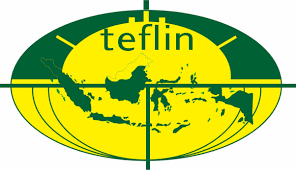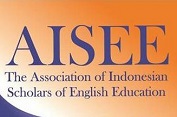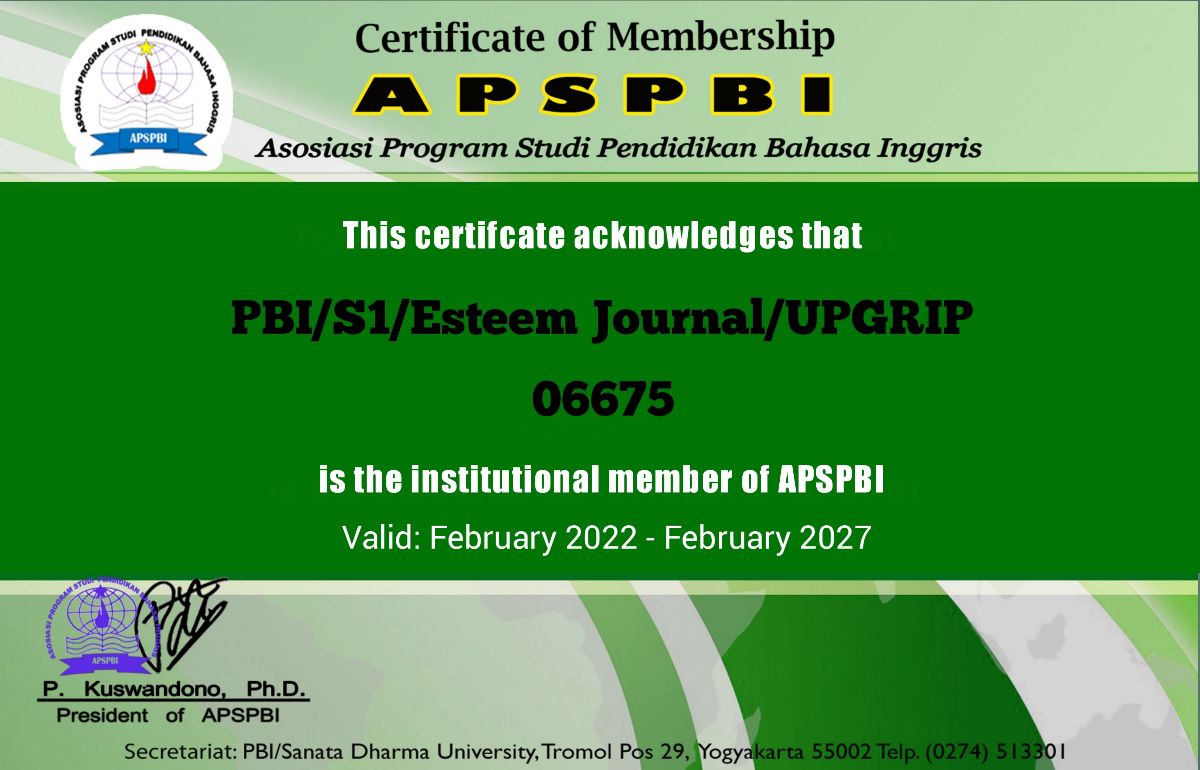APPLIED LINGUSTICS (GASTRONOMIC STUDY): NAMING, TYPICAL CHARACTERISTICS AND MANUFACTURING TECHNIQUES ON DOCUMENTATION OF TRADITIONAL SNACKS AT PURWOREJO DISTRICT MARKET
DOI:
https://doi.org/10.31851/esteem.v7i2.15362Keywords:
origin of name, food characteristics, traditional snacks, gastronomic studies, manufacturing techniques, KBBI enrichmentAbstract
Traditional foods have names whose origins are unknown. The names of these traditional foods contain meaning, cultural values and history that shape them. This is important to document in order to preserve traditional food and to enrich the formation of Indonesian vocabulary. This research aims to (1) inventory and document Purworejo traditional food in the form of market snacks; (2) describe the meaning of names, characteristics and techniques for making traditional market snacks in Purworejo. This research is qualitative research using a documentation study approach. This research data consists of images, vocabulary and morphological structure. The data source is in the form of documents regarding traditional market snacks in Purworejo Regency. The sampling technique was carried out using purposive sampling. The data collection technique was carried out by document analysis. The data analysis technique is carried out using flowing model data analysis. Testing the validity of the data was carried out by triangulation between researchers. The results of the research showed that (1) 17 names of traditional snacks from Purworejo Regency were found that had not been documented in KBBI V, namely ciwel, clorot, dawet goreng, jenang pati garut/kerut, jongkong, golak, kue lompong, kokrok, putil, legendar, lemet, lupis, mata roda, meniran, rangin, sengkulun, and tahu susur/brontak. (2) The characteristics of each food vary, such as how it is made, how to eat it, and the ingredients used. (3) The making technique is generally done by steaming, boiling and frying. It is hoped that this research can add to the vocabulary of Indonesian and become an effort to preserve traditional Indonesian snacks.
References
Abdullah, A., Sari, W. N., & Mulyawan, U. (2021). Indahnya Toleransi dalam Semangkok Soto (Kajian Gastronomi Sasak Soto Chi Chang Ampenan). Journal Of Responsible Tourism, 1(2), 175–182. https://doi.org/10.47492/jrt.v1i2.1352
Brillat-Savarin, J. A. (1826). The Physiology of Taste. Farrar, Straus and Giroux.
Endraswara, S. (2018). Metodologi penelitian gastronomi sastra. Textium.
Gardjito, M., Indrati, R., Maryoto, A., & Utami, N. N. (2019). Gastronomi Indonesia Jilid 1 (1st ed.). Global Pustaka Utama Yogyakarta.
Hadiyaniyah, Y. N. (2016). Leksikon Makanan Tradisional Sunda di Kabupaten Kuningan (Kajian Etnolinguistik). Lokabasa: Jurnal Kajian Bahasa, Sastra, Dan Budaya Serta Pengajarannya, 7(1), 94–102.
Hardiyanto, & Wulandari, S. (2017). Penggunaan Istilah oleh Masyarakat Kerinci dalam Budaya Agraris bidang Persawahan: Upaya Pelestarian Bahasa Daerah Melayu Kerinci. Jurnal Titian, 1(2), 110–127. http://www.unesco.org
Harimansyah, G. (2017). Pedoman Konservasi dan Revitalisasi Bahasa. In Badan Pengembangan dan Pembinaan Bahasa.
Hisa, L., Mahuze, A., & Arka, I. W. (2019). Dokumentasi Etnobotani-Linguistik Tumbuhan Sagu: Laporan Awal Dari Etnis Marori di Taman Nasional Wasur Merauke. Linguistik Indonesia, 35(2), 187–200. https://doi.org/10.26499/li.v35i2.69
Huda, N. T. (2018). Etnomatematika Pada Bentuk Jajanan Pasar di Daerah Istimewa Yogyakarta. Jurnal Nasional Pendidikan Matematika), 2(2), 217–232.
Kasmini, L., & Mulyani, I. (2023). Analisis Kandungan, Penamaan dan Makna dari Makanan Tradisional Aceh. Journal Metamorfosa, 11(2), 145–161. https://doi.org/https://doi.org/10.46244/metamorfosa.v11i2.2272
Krisnadi, A. R. (2018). Gastronomi Makanan Betawi sebagai Salah Satu Identitas Budaya Daerah. National Conference of Creative Industry. https://doi.org/10.30813/ncci.v0i0.1221
Lecuyer, M. (1968). La Gastronomie française. Editions du Pavillon.
Lubis, I. S., Tanjung, H. R., & Hepridayanti. (2021). Sistem Penamaan dan Makna pada Makanan Tradisional di Kota Padangsidimpuan. Jurnal Education and Development, 9(4), 607–614.
Miles, M. B., Huberman, A. M., & Saldana, J. (2014). Qualitative Data Analysis. Sage Publications.
Nugroho, S. P., & HD, I. P. H. (2020). Gastronomi Makanan Khas Keraton Yogyakarta sebagai Upaya Pengembangan Wisata Kuliner. Jurnal Khatulistiwa Informatika, 7(1), 52–62. https://doi.org/10.31294/par.v7i1.8136.
Nurjanah, E. (2023). Kajian Semantik Penamaan Makanan Khas di D.I. Yogyakarta. Narasi: Jurnal Kajian Bahasa, Sastra Indonesia, Dan Pengajarannya, 1(1), 1–11. https://doi.org/10.30762/narasi.v1i1.893
Pamantung, R. P. (2019). Tradisi Minahasa Terkait dengan Makanan Tradisional. Kajian Linguistik, 7(1). https://doi.org/10.35796/kaling.7.1.2019.24774
Sugiyono. (2017). Metode Penelitian Kuantitatif, Kualitatif, dan R&D. Alfabeta.
Downloads
Published
Issue
Section
License
Copyright (c) 2024 Akhmad Mukhibun, Rosantika Utami Setyoningsih

This work is licensed under a Creative Commons Attribution-NonCommercial-ShareAlike 4.0 International License.
Copyright Notice
Authors who publish with this journal agree to the following terms:
In order to assure the highest standards for published articles, a peer review policy is applied. In pursue of the compliance with academic standards, all parties involved in the publishing process (the authors, the editors and the editorial board and the reviewers) agree to meet the responsibilities stated below in accordance to the Journal publication ethics and malpractice statement.
Duties of Authors:
- The author(s) warrant that the submitted article is an original work, which has not been previously published, and that they have obtained an agreement from any co-author(s) prior to the manuscript’s submission;
- The author(s) should not submit articles describing essentially the same research to more than one journal;
- The authors(s) make certain that the manuscript meets the terms of the Manuscript Submission Guideline regarding appropriate academic citation and that no copyright infringement occurs;
- The authors(s) should inform the editors about any conflict of interests and report any errors they subsequently, discover in their manuscript.
Duties of Editors and the Editorial Board:
- The editors, together with the editorial board, are responsible for deciding upon the publication or rejection of the submitted manuscripts based only on their originality, significance, and relevance to the domains of the journal;
- The editors evaluate the manuscripts compliance with academic criteria, the domains of the journal and the guidelines;
- The editors must at all times respect the confidentiality of any information pertaining to the submitted manuscripts;
- The editors assign the review of each manuscript to two reviewers chosen according to their domains of expertise. The editors must take into account any conflict of interest reported by the authors and the reviewers.
- The editors must ensure that the comments and recommendations of the reviewers are sent to the author(s) in due time and that the manuscripts are returned to the editors, who take the final decision to publish them or not.
Authors are permitted and encouraged to post online a pre-publication manuscript (but not the Publisher final formatted PDF version of the Work) in institutional repositories or on their Websites prior to and during the submission process, as it can lead to productive exchanges, as well as earlier and greater citation of published work (see The Effect of Open Access). Any such posting made before acceptance and publication of the Work shall be updated upon publication to include a reference to the Publisher-assigned DOI (Digital Object Identifier) and a link to the online abstract for the final published Work in the Journal.





























